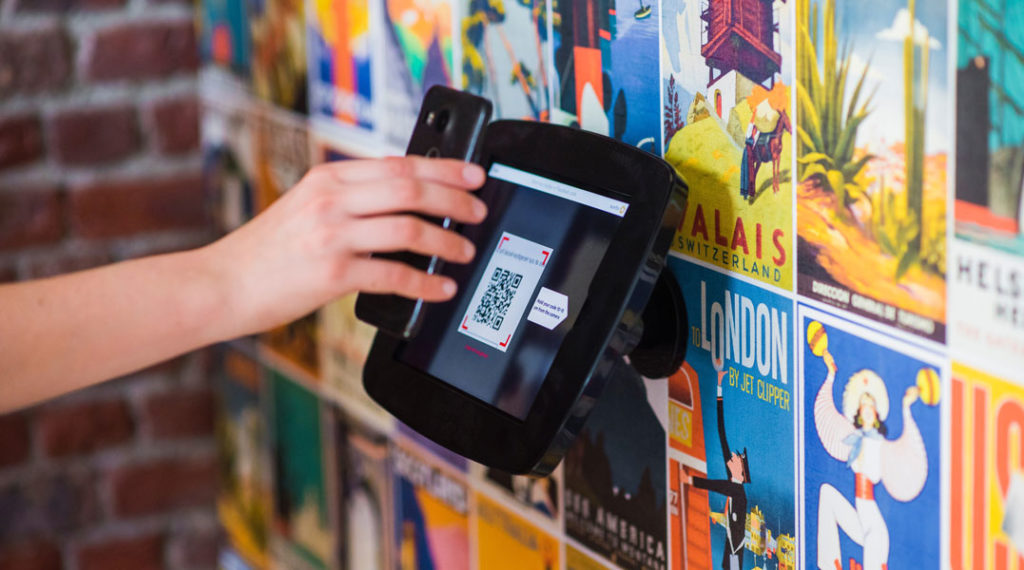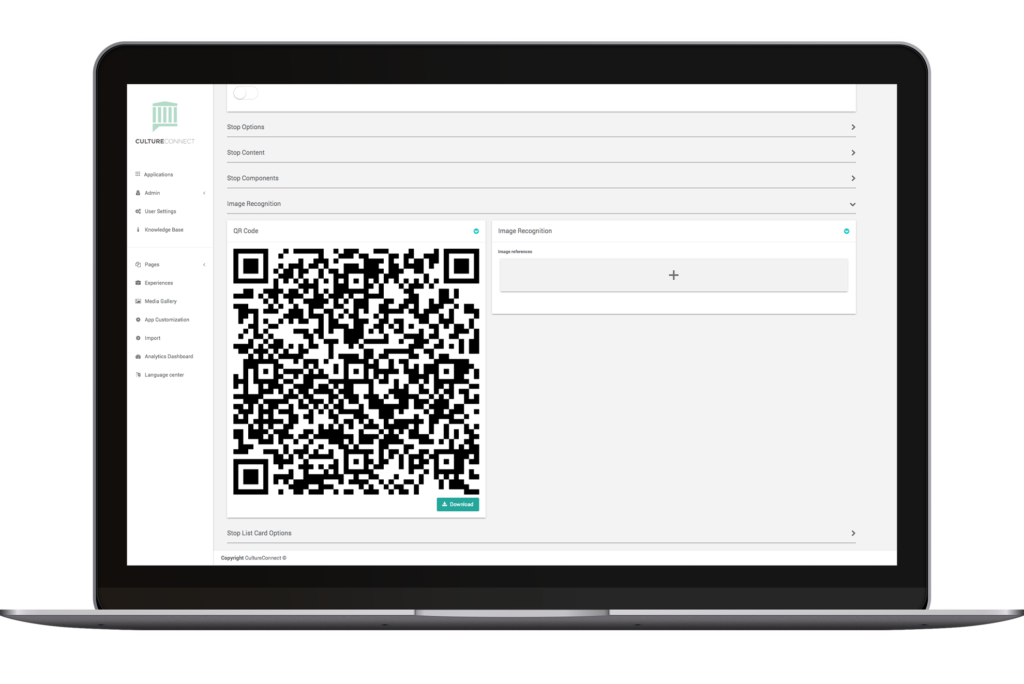
Introducing: Image Recognition! Create meaningful engagement with visitors, enhance way-finding, and simplify collection exploration.
WHAT IS IMAGE RECOGNITION?
Image Recognition technology allows your smartphone camera to automatically scan images and trigger content. Visitors can now hold their phone up to your collection artworks, exhibit objects, or graphic images (like a QR code) and trigger the content in your CultureConnect app.
For successful way-finding, it’s essential to connect the physical and digital experiences.
Image recognition is a fun approach to discovering content but it also helps to serve visitors on a much more practical level.
ENHANCE WAY-FINDING
While Mobile Guides and Scavenger Hunts already include interactive maps, keypads, location fields, and other features to help guide visitors through their site visit, image recognition provides new opportunities to help orient them on both a physical and digital plane.
With image recognition, visitors are able to self-direct their museum experience focusing on their physical journey. When they come across a collection item they want to learn more about or see an image recognition signal (e.g. like a QR code), they simply take their phone out and scan the item to learn more.
PRO TIP: Create “surprise content” experiences that can only be accessed through scanning a QR Code or specially marked collection items.
CREATE A CONTACT-FREE VISITOR EXPERIENCE
Many of our clients are in the process of developing clear physical markers to guide visitors through their site visit while maintaining a safe social distance. Image recognition is just one way to simplify this process – visitors easily use their personal devices for deeper dives rather than renting hardware.
One popular use-case for Image Recognition we see in response to COVID is providing visitors a choice of using in-gallery kiosks or viewing the touchscreen experience on their personal device. All CultureConnect products are responsive in design, so they seamlessly work across all screen sizes. Putting a QR code on the attract screen of your kiosk experience provides visitors this choice.
CREATE MUSEUM EXPERIENCES OFF CAMPUS
Image recognition works in many formats so a visitor doesn’t have to be onsite to experience these triggers. Here are a few ideas for how to leverage image recognition when visitors are not on site:
- Collections Online – users scan the image on their screen to trigger content for the enthusiast or student.
- Online Exhibits – users scan images featured in exhibitions to access interpretive content (e.g. audio tour content) or interactive challenges.
- Scavenger Hunt & Games – create interactive challenges that are discovered or solved when the user scans the right collection object.
HOW IT WORKS
We’ve launched a scalable and affordable approach to building image recognition on the CultureConnect platform. We do this two ways:
- QR Codes: We auto-generate a QR code for you for any content page that you can download. QR codes can be printed for use onsite as part of your tent cards, posters, wall signage, wall labels, and more. Or, then can be used for digital collateral for marketing or off-site use.
- Reference Images: You can also add reference images in the CMS. A reference image might be a digital scan the artwork or in-situ photos in-gallery taken from different angles. When the user scans the actual artwork or object, it references these images and triggers the associated content.
You may find other platforms out there that use image recognition, but we’re different in two key ways:
- First, we allow you to trigger any content in your app, not just database entries in one-size-fits all templates. You can still leverage all the custom design and unique interactive features in your app. Use our collections management integration feature to mass import your collection data and media.
- Second, it’s your app, not ours. You can publish a unique, fully branded mobile guide, rather than being forced to publish your content in an app lost among other museums making the visitor take extra steps to find you.
QUICK TIPS
Here are a few best practices to keep in mind as you plan through your image recognition project:
- Image recognition relies on good quality images that are representative of the object in real life. Take multiple reference images to account for the lighting in your gallery, the frame, the position of a viewer.
- 2D objects are the most reliable for image recognition triggers because the viewer position is relatively simple. Sculptures, installations, and complex spaces may require more reference images and testing.
- Lighting matters – if the lighting in your gallery changes over the course of a day, it’s a good idea to include variations in lighting so that visitors can trigger the same content regardless of the time of day.
- It should be clear to the visitor which collection items will respond to image recognition. Either include all items on display so that no matter what collection item a visitor scans, they discover content. Or, if only including some items then include an image recognition icon or QR code on your wall labels so that visitors know where scanning opportunities exist.
Learn more about how to use Image Recognition in your next digital project at our Webinar: Mobile Guide Strategy on October 21 [REGISTER HERE].
And, Contact us for a Demo!


